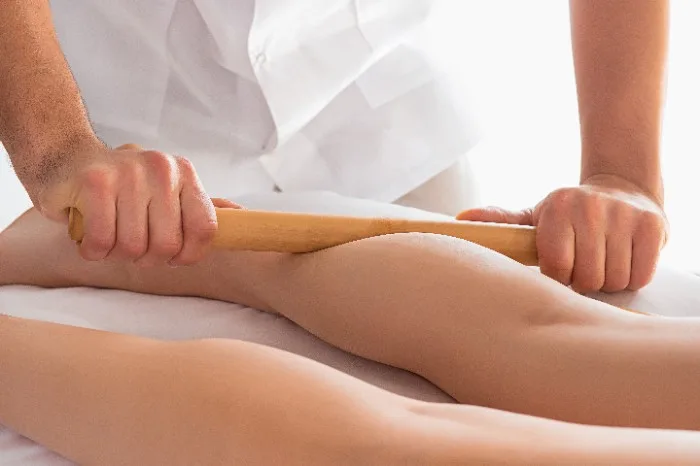After a soothing and relaxing massage session, it’s not uncommon to experience some level of soreness. This discomfort can be puzzling, especially when the purpose of the massage is to alleviate tension and stress. Understanding the causes and potential solutions for post-massage soreness can help individuals maximize their massage experience while minimizing any lingering discomfort.
What Causes Soreness After a Massage?
It’s normal to experience some level of soreness after a massage. This is a common response to the physical manipulation of muscle tissue, especially if you had deep tissue work or haven’t had a massage in a long time. The soreness is usually temporary and should subside within a day or two. It’s similar to the feeling after a good workout, indicating that your muscles respond to the treatment. However, if the pain is severe or lasts longer than a couple of days, it’s advisable to consult a healthcare professional.

Types of Massage and Their Effects
Different types of massages can lead to different degrees of soreness. For example, sports massages are more likely to cause soreness compared to more gentle forms like Swedish massage. For instance, deep tissue massages, which involve firm pressure and slow strokes to reach deeper layers of muscle and fascia, are more likely to cause soreness compared to gentler forms like Swedish massage.
Common Causes of Post-Massage Soreness
- Muscle Tension and Knots: For those with significant muscle tension or knots, a massage can feel like an intense workout for the muscles, resulting in soreness.
- Lactic Acid Buildup: While massage helps release lactic acid from muscle tissues, the process can temporarily increase its concentration in the bloodstream, contributing to soreness.
- Dehydration: Massage can dehydrate the body slightly. When muscles are dehydrated, it can exacerbate soreness.
- Sensitivity or Inflammation: Some individuals have sensitive skin or underlying conditions that may react to the pressure and friction of a massage, leading to soreness.
How to Alleviate Post-Massage Soreness
While soreness after a massage is natural, there are measures individuals can take to minimize discomfort and optimize the benefits of their massage experience. It’s essential to allow the body time to adapt after a massage session, as soreness can be an initial response to the therapeutic manipulation of muscles. Giving the body time to recover is crucial for minimizing post-massage discomfort.
Immediate Solutions
- Hydration: Drinking plenty of water before and after a massage helps flush out toxins and reduce lactic acid buildup.
- Warm Bath: Soaking in a warm bath with Epsom salts can soothe sore muscles.
- Gentle Stretching: Light stretching can help alleviate muscle tightness and enhance circulation.
Long-Term Strategies
- Regular Massages: Consistently receiving massages can help the body adapt and reduce the likelihood of soreness over time.
- Communicate with Your Therapist: Inform your massage therapist about your pain threshold and any soreness you experience so they can adjust their technique.
- Post-Massage Care: Rest and avoid strenuous activities after a massage to give your body time to recover.
Communicating with Your Massage Therapist
Open communication with your massage therapist is key in managing soreness. Providing feedback during the session regarding pressure and sensitive areas allows the therapist to customize the massage to your comfort level, potentially reducing post-massage soreness.
Understanding Normal Post-Massage Discomfort vs. Concerning Pain
Individuals must differentiate between typical post-massage soreness and discomfort that could signal an anomaly. If the soreness surpasses expected levels, seeking professional advice for a thorough assessment and appropriate guidance is prudent.
| Normal Post-Massage Discomfort | Concerning Pain |
|---|---|
| Soreness in muscles is common after a massage, especially if it has been a while since your last massage or you’ve never had one before. | If the soreness or discomfort is severe or lasts for an extended period, it’s essential to consult a healthcare professional to rule out any underlying conditions. |
| Soreness can be temporary and usually subsides within a day. | If you experience pain during the massage, it’s crucial to speak up to your therapist and request adjustments to the techniques used. |
| Soreness can be managed with simple tips, such as taking care of yourself after the massage, staying hydrated, and having regular massage sessions. | If you have a history of chronic pain or sensitive areas, inform your massage therapist to ensure they are aware of your unique body responses and can adapt the massage accordingly. |
Conclusion: Balancing Relief and Awareness in Massage Therapy
Understanding post-massage soreness is crucial in maximizing the benefits of massage therapy. While some discomfort is normal, particularly after intense techniques like deep tissue massage, it typically subsides within a day and indicates effective tension release. However, distinguishing between this normal soreness and signs of concerning pain is essential for your well-being.
To alleviate normal post-massage soreness, prioritize hydration, indulge in warm baths with Epsom salts, and gently stretch. These practices not only soothe sore muscles but also enhance the therapeutic effects of the massage. Regular massage sessions and clear communication with your therapist about your comfort levels and pain thresholds are key for long-term benefits.
Remember, massage therapy is a journey of understanding your body’s needs and responses. By taking appropriate care and staying attuned to your body’s signals, you can enjoy massage’s rejuvenating and healing powers while ensuring your health and safety.

